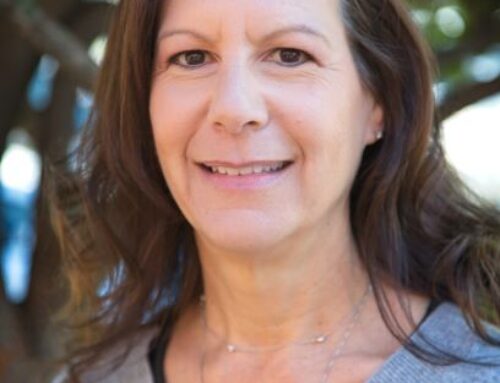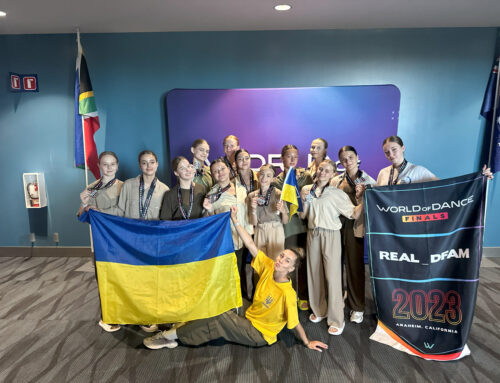Mount Madonna students learn about California history on two-day field trip
Published in the November 27, 2013 issue of Morgan Hill Life
By Staff Report

Mount Madonna School third grader Taylor Shaw pans for gold at the Marshall Gold Discovery State Park in Coloma. MMS third and fourth graders visited the site for some hands-on learning about California’s rich history. (Photo by Susan Pendry.)
Along the banks of the American River’s South Fork, in a valley native Nisenan people called “Cullumah“ or “beautiful valley,” craftsman James Marshall discovered gold in 1848. Marshall’s discovery began the great California Gold Rush and fueled the West’s dramatic growth for decades.
Twenty-five Mount Madonna School third and fourth graders learned this and more about California history during a recent two-day field trip to several Sacramento locations, as well as an excursion to the Sierra foothills where they explored the grounds of Sutter’s Mill and the Marshall Gold Discovery State Historic Park.
“We had the chance to visit and explore history where it actually happened,” said Hamsa Heinrich, a longtime third grade teacher at MMS. “For students, it’s just this sort of experiential learning that makes all the abstract knowledge become more solid and real.”
Third graders Sadie Willoughby and Cecily Kelly said they had fun panning for gold, despite finding very little of the precious metal.
“Gold panning was hard work, especially in 1849,” Kelly said. “The tubs we were panning were full of sand, rocks, fool’s gold or iron pyrite and some garnets. The reason people made gold worth money was because it was rare and easy to work.”
Exploring the river and shoreline also offered a pleasant diversion, with some children opting to splash around in the shallows.
“The water was ridiculously cold when I dunked my head underwater,” said third grader Jackson Hopkins. “This was my favorite part of the field trip.”
“The river was big and wide,” observed classmate Taylor Shaw. “It had a rock bank with some rocks so big you could stand on them with a friend. We liked splashing in the river and jumping from rock to rock.”

Mount Madonna School third grader Thomas Pendry explores Sutter’s Fort in Sacramento. MMS third and fourth graders took a two-day field trip to Sacramento and the Sierras to learn about California history. (Photos by Susan Pendry.)
The students, their teachers and parent chaperones spent their first day together in Sacramento visiting Sutter’s Fort, along with the State Indian Museum, California State Railroad Museum and Sacramento History Museum.
“The history museum was very fun and interesting,” said third grader Nicole Brandt. “We learned a lot of things about the past, like how the gold miners looked for gold by using water cannons to blast the dirt off the mountainsides. This method was later outlawed because it damaged so much land and polluted the water.”
“At both the State Indian Museum and the Sacramento History Museum we were fortunate to have enthusiastic docents,” Heinrich said. “They were captivating storytellers who wove the past into meaningful connections for all of us. Being able to visit historic sites, see real artifacts and learn from well-informed docents is a more concrete experience that brings history alive, and helps children to better understand a sequence of time and how events unfolded.”
Students learned that Sutter’s Fort, constructed in 1840, was one of the first settlements where pioneers could stay when they arrived in Alta California. Some of these pioneers went to work for Swiss proprietor John Sutter, while others made needed repairs or stocked up on supplies before moving on.
Heinrich said the biannual Sacramento trip grew out of a school tradition of traveling and learning together off campus. “There are so many ways to learn,” she said, “and getting outside of the classroom is quite positive and productive – the opportunity for ‘concentrated learning’ really inspires everybody. When the kids return to the classroom the following week, they are ready to process their experiences and insights – and to share what they’ve learned with their school community and family through their writings, storytelling, and artworks.”
An overnight excursion to learn about California has been part of MMS’s elementary program and Heinrich’s annual curriculum for more than two decades. When she first began, Heinrich took her class each year to the Montara Lighthouse and other nearby sites to study North Coast geography and ecology; this field study was focused to meet specific aspects of the third grade curricular standards. A number of years ago, the Sacramento trip, which focuses more on history – including western expansion, Native Americans, the railroads and gold rush – was designed and added to meet curricular standards for fourth graders.
“It is so exciting to take students to places where history was made,” said fourth grade teacher Linda Pope. “There is so much amazing California history that we teach in both third and fourth grades. Nothing is better than giving your students hands-on experiences. Being able to show them the actual size of a covered wagon, and what few items settlers could bring with them is eye-opening for students living in our day and age.”
In preparing for this learning adventure, Pope was instrumental in researching and resurrecting the Sierra component.
“It was important to me to have my students explore Coloma and Sutter’s Mill,” she said. “This journey took us out of an urban setting and into the country where the students could get more of a feeling for pioneer life.”
In addition to the trip’s explicit curricular elements, there is the implicit learning that takes place surrounding issues of socialization and independence.
“New situations… everything from riding in a new carpool to being paired up with a different classmate at a museum, spending a night away at a youth hostel and helping to prepare the group’s meals, create opportunities to connect and expand our knowledge on many levels,” Heinrich said.
“The transformation of going into the unknown isn’t easy,” she said. “In fact, it can be scary, particularly for children. And when their worries are replaced by a positive experience, it builds confidence and character.”






